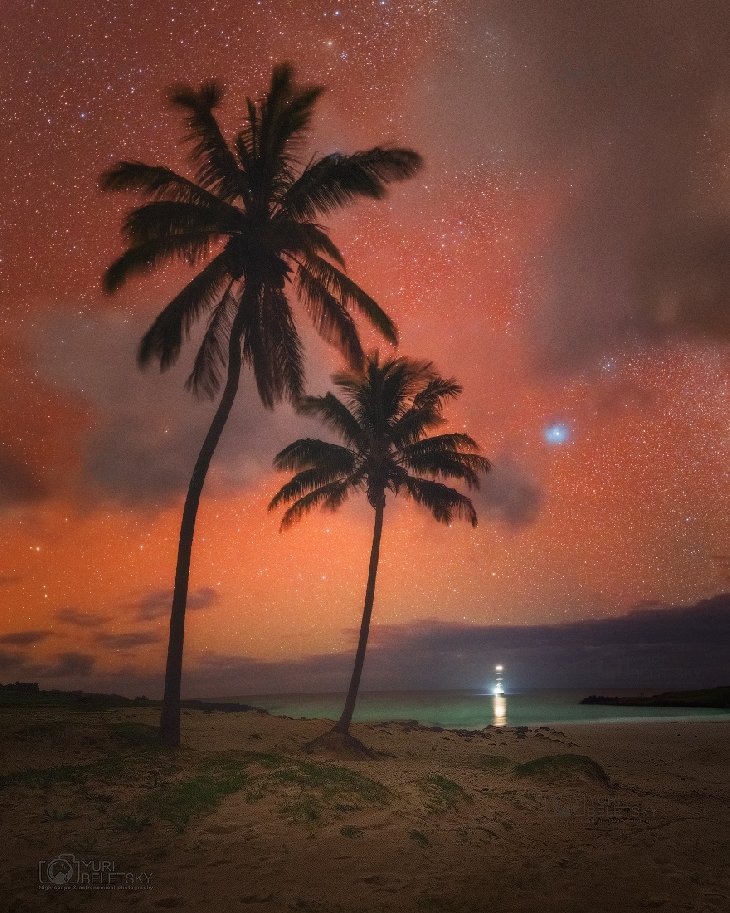
"There was no fire," says Beletsky. "This is an amazing display of airglow."
Airglow is aurora-like phenomenon caused by chemical reactions in the upper atmosphere. Human eyes seldom notice the faint glow, because it is usually very faint, but it can be photographed on almost any clear dark night, anywhere in the world.
Beletsky is a veteran photographer of airglow, having captured it dozens of times from sites in Chile and the South Pacific. "The intensity of airglow varies, and sometimes it can be more prominent, as it was on Oct. 2nd," he says.
The curious thing about Beletsky's photo is not the intensity of the airglow, but rather its color--red. Airglow is usually green, the color of light from oxygen atoms some 90 km to 100 km above Earth's surface. Where does the red come from? Instead of oxygen, OH can produce the ruddy hue. These neutral molecules (not to be confused with the OH- ion found in aqueous solutions) exist in a thin layer 85 km high where gravity waves often impress the red glow with a dramatic rippling structure.



Reader Comments
to our Newsletter